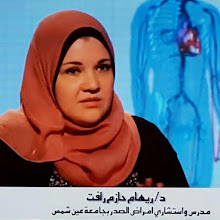-Definition:
Heritable disorder demonstrating an autosomal recessive pattern in which there is a wide spread dysfunction of exocrine glands in the form of:
a) Chronic pulmonary disease (more presented in adolescents).
b) Pancreatic insufficiency (more presented in infants).
c) Abnormally high levels of electrolytes in sweat (diagnostic test).
d) Malabsorption (thick sticky secretions in intestine; mucoviscidosis).
[A] General measures:
a. Proper nourishment by high caloric diet (double normal) with high proteins and carbohydrates due to increased need due to high energy expenditure due to increased work of breathing with chronic infection à clear secretions and eradicate infections.
b. Exercise program to improve PFT.
[B] Drainage: (90% of patients die of complications)
a. Physiotherapy à every 12 hrs in stable stages and more in exacerbations (same as bronchiectasis).
b. Bronchodilator (B2 agonist or ipratropium may help).
c. Corticosteroids à reverse airflow obstruction when unresponsive to BD, in aspergillosis and in severe bronchiolitis in infants.
d. Mucolytics (as in bronchiectasis).
[C] Antibiotics: for 2 weeks even after improvement to decrease relapse rate and increase intervals between exacerbations à mainly anti-staphylococcal and anti-pseudomonal as:
a. Aminoglycosides: IV (8-12 mg/kg/d) or inhaled to impend growth of colonized bacteria so used only in frequent exacerbations as Tobramycin (300mg twice/d every other month) à peak serum level: 2-10 mcg/ml with FU serum creatinine.
b. Carbinicillins: Meropenem, Tinem.
c. Cephtazidim (fortum): 2 gm/8 hrs.
d. Ciprofloxacin: 500 mg/12 hrs.
[D] Psychological support
[E] Others aspects of management:
a. Chest complications:
1. Pneumothorax: if small à re-absorption, if large or bilateral à ICT drainage.
2. Corpulmonale: O2 up to BiPAP or IPPV and diuretics.
3. Hemoptysis: (see hemoptysis chapter)
4. Nasal inflammation: fluticazone nasal spray.
5. End stage lung: cardio-pulmonary transplantation (difficult to select patients because it's a systemic disease).
b. Reproductive problems:
1. ♂ à Intra-cytoplasmic sperm injection.
2. ♀ à Assisted reproduction techniques.
c. GIT problems:
1. Meconium ileus: gastric aspiration, IV fluids, enemas (30 ml AC in normal saline), oral intestinal lavage (isotonic balanced solution containing high molecular weight glycol 1L/hr/4-6 hrs) and surgical ttt for DU & gall stones.
2. Pancreatic insufficiency: extract of pancreatin and H2 blockers to prevent its inactivation with gastric acid.
3. D.M.: insulin.
4. Liver disease: vitamin K (especially if high PT).
5. Mal-absorption: correct defects (supplementations).
d. Osteoporosis: Vitamin D and Ca intake ± bisphosphonates.
e. Early prenatally detected cases:
1. Gene therapy (trials are done).
2. U.T.P (uridine triphosphate aerosol activates Cl- channel) à safely tried ± Amiloride à increase muco-ciliary clearance and decrease secretions.
*For Full Text --> download from: Cystic Fibrosis.doc


No comments:
Post a Comment